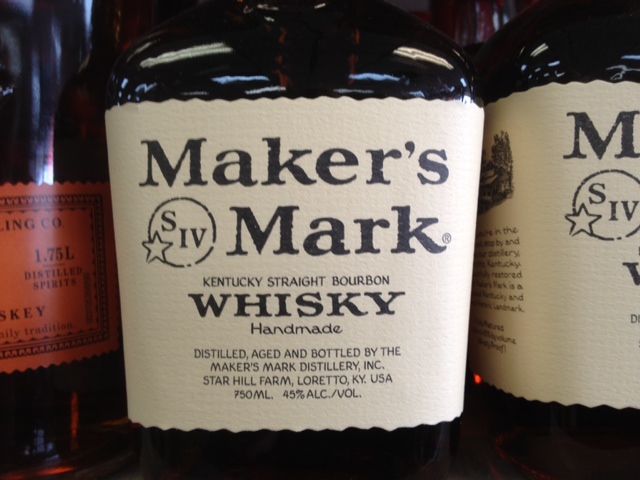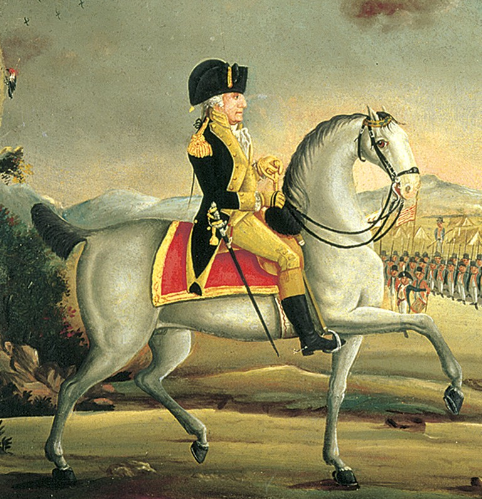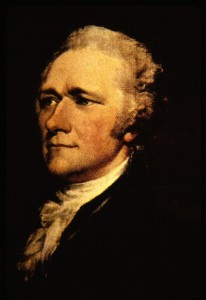The Digital Whiskey Rebellion, Or How Maker’s Returned To The Mark (Part II)
(This is Part II. Click here to read The Digital Whiskey Rebellion Part I.)
At the conclusion of Part I, Marker’s Mark announced that they were lowering the proof of their bourbon to ease a product shortage. Chairman Emeritus Bill Samuels explained that he could not taste a difference and did not think others would, either.

Bourbon drinkers are intensely brand loyal. And proud of it. Maker’s Mark fans saw the proof switch as a profound slap in the face. Watered down whiskey at full price. What a cheap trick! Worse, the company thought its customers were literally too tasteless to notice the difference! Twitter and the blogosphere blazed like that tax inspector’s home in 1791. People who didn’t even drink whiskey fanned the flames. This was just like that sneaky dimple in the bottom of the peanut butter jar. Or those swollen snack packages that hold fewer chips and more puffed air. Corporate contempt for customer loyalty at its worst!
The mainstream media went from touching on the story to jumping on it. Coverage ballooned as the rebellion spread. Many diehard Maker’s drinkers pledged to boycott their favorite beverage. Others swarmed into stores, intent on buying all they could before the lower proof product arrived. Angry e-mails flooded the company’s inboxes. Online comments grew more extreme. The social media fury itself became a mainstream story. Forbes declared that Maker’s had committed “brand suicide.”
 So, nearly 210 years after Pennsylvania farmers realized that fighting an overwhelming force would be a fatal error, Maker’s Mark called the whole thing off. Fresh from their weeklong digital tarring and feathering, Bill Samuels and his son, President and CEO Ron Samuels, announced that they had heard their customers loud and clear. They made a mistake, and they were sorry. Maker’s Mark would continue to be bottled at 90 proof. “You spoke. We listened,” Maker’s tweeted, including a link to a full apology on Facebook.
So, nearly 210 years after Pennsylvania farmers realized that fighting an overwhelming force would be a fatal error, Maker’s Mark called the whole thing off. Fresh from their weeklong digital tarring and feathering, Bill Samuels and his son, President and CEO Ron Samuels, announced that they had heard their customers loud and clear. They made a mistake, and they were sorry. Maker’s Mark would continue to be bottled at 90 proof. “You spoke. We listened,” Maker’s tweeted, including a link to a full apology on Facebook.
A great cheer echoed across the fields, umm, screens of the republic. “You spoke. We listened,” became a hashtag that became a public kiss-and-make-up fest. D’awww.
Maker’s Mark won praise for listening and learning. A “new Coke” or “new Netflix” fiasco had been headed off at the pass. Meanwhile, some of the same bourbon drinkers who scorned the sale of a lower proof product began searching for the few bottles that had supposedly reached the shelves, intent on snapping them up as treasured collector’s items. Go figure.
The Whiskey Rebellion of 2013 was over. But like the Whiskey Rebellion of old, this year’s model includes a slippery conspiratorial coda.

Back in the day, some said that Alexander Hamilton’s tax was never intended to be a revenue raiser. His true agenda was to create aconfrontation in which the federal government showed the citizenry who was boss by force of arms. After all, few things were guaranteed to generate conflict like a whiskey tax. Especially an unfair one. Today, bars and blogs alike are full of rumors that Maker’s Mark never intended to lower the proof of its bourbon. The whole thing was an insanely brilliant shadow show staged to create fresh buzz around a fifty-something brand. No such thing as bad publicity, right?
I find this “the whole thing was a fake” theory harder to swallow than a mouthful of moonshine. Betting their brand on a dishonest publicity stunt is the complete opposite of the Samuels’ style. Like the rest of the liquor industry and the rest of us, they learned that changing a popular product in the digital age can cause your customers to pop their corks in a very different way than you expected.
(Notes: 1. Maker’s Mark is one of the relatively few American distilleries that uses the less common spelling “whisky” to identify their product. To avoid confusion, I chose to go with the more typical “whiskey” throughout this piece. 2. The Maker’s Mark distillery in Loretto, Kentucky, is a little harder to get to than some of the others on the historic Bourbon Trail, but well worth the effort. 3. The Samuels family founded Maker’s Mark in the 1950s. Though the company has been sold several times and is currently owned by Beam, Inc., the Samuels continue to manage it. 4. In my humble opinion, longtime agency Doe-Anderson’s recent work for Maker’s is some of the best spirit advertising around. Their “It Is What It Isn’t™” tagline is terrific.)
George B.
A good historical researcher/writer touched by the sprit of the spirits to comment on a whiskey fiasco. Proofing the proof, real or diluted, can only mean painstaking hours of consumption by the victim for the purpose of vindication in such a crime against humanity. A form of hemlock replayed as farce, it is a high compliment from the savvy public, for which it stands, to say “Don’t mess with my Spirit!”
Jon S.
Thanks for reminding me that it’s still possible to destroy a product’s well-earned brand equity with a single decision. Yet another thought-provoking read from the right side of Bill’s Brain.
Happ W.
I enjoy your style, wit, thoroughness and clarity. I heard several stories about the plan to water down Maker’s Mark to meet demand but didn’t realize the extent to which the Samuels boys shot themselves in the foot. Good operational managers, they really lost sight of marketing and brand management and are lucky they didn’t completely mess things up.
Gary F.
A toast to further proof that a company does not own its brand and reputation, its customers do.
Kansas Dave
“This was just like that sneaky dimple in the bottom of the peanut butter jar. Or those swollen snack packages that hold fewer chips and more puffed air.” I was thinking the same thing until you helped me calm down and refocus. I’m sure the decision to go public with the watering-down was supported by all manner of “research,” pretty charts, etc., and the idea that acknowledging plans to change the product up front would be hailed as a rare instance of corporate candor. A good idea that didn’t work. Kudos to the Samuels for admitting their mistake.
Bob G.
Yet another reason to never wander north of the Tennessee line—when ole Uncle Jack is still makin Old No. 7 without watering it down!
Bill
The proof of the famous flagship black label product has actually been lowered twice. In the 1980s, it was reduced from 90 to 86. In the fall of 2004, it was cut from 86 to 80. An online petition urging that the decision be reversed was created and eventually drew over 13,000 signatures, but outrage was neither instantaneous nor widespread. (Facebook had launched a few months before. Twitter was two years away.) The company was not swayed, and today, Old No. 7 is bottled at 80 proof and remains the world’s bestselling whiskey.